Interview: Kantemir Balagov
Kantemir Balagov hails from the Kabardino-Balkaria Republic of the Russian North Caucasus, a fraught multi-ethnic region rarely represented in the country’s cinema. Formerly a web producer, Balagov turned to directing after enrolling in Alexander Sokurov’s five-year filmmaking workshop at the Kabardino-Balkarian University, where he was exposed to the likes of the French New Wave and Khrushchev Thaw Cinema. At last year’s Cannes, he presented a firecracker first feature named Closeness—a tightly wound work of stylized social realism that announces Balagov as an exciting new voice in contemporary Russian cinema.
Set in 1998 in Balagov’s hometown of Nalchik, Closeness centers on fiery 24-year-old Jewish tomboy Ilana, played by a riveting, uncontainable Darya Zhovner. Much to her mother’s chagrin, Ilana struts around in grimy denim overalls (with a jacket pointedly embroidered with a lion) and sneaks out at night to see her rough-edged Kabardian boyfriend Zalim. When her brother and his fiancée are kidnapped for ransom, she is confronted by a double alienation. Her family’s desperate, unsuccessful attempts to raise the funds reinforce their status as outsiders even within the city’s close-knit Jewish community. More damningly, they expose to Ilana her secondary importance within her own family, as her mother tries to forcibly marry her off in exchange for money.
True to its name, Closeness is a sustained study of claustrophobia, whether formal, familial, or psychological. As Ilana oscillates between despair and stubborn rebellion, Balagov captures his heroine’s constricting milieu in a tight 4:3 frame and searing, saturated colours. The constant simmer of ethnic conflict compounds this pressure-cooker premise, getting too close for comfort when Ilana, Zalim, and his friends watch an execution video from the Dagestan massacre in its entirety. It’s a difficult film, erratic in shape and exhausting in its sensory intensity; however, thanks to the sheer force and precision of Balagov’s direction, it’s never anything short of transfixing.
I spoke to Balagov on phone in advance of the New Directors/New Films premiere of Closeness on March 31.
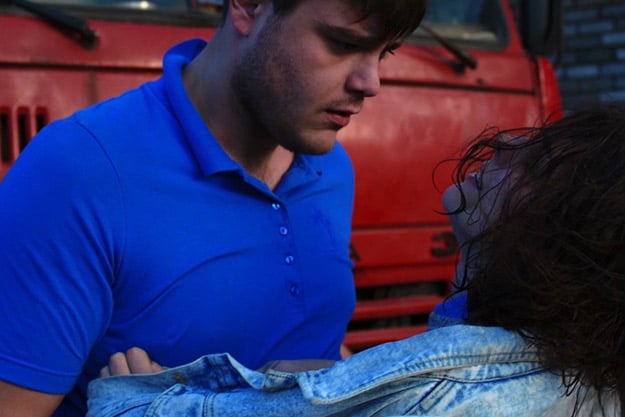
You write yourself into the film in a very interesting way. You overlay the opening sequence with subtitles announcing your name and your biographical connection to the film’s setting. Why did you decide to do it that way?
First of all, when we showed the film to Russian critics, they were afraid that audiences in Europe or the U.S. wouldn’t be able to get the message because they don’t know anything about North Caucasus or Kabardians. So that was the first target. The second, and the major reason for including the subtitles, was that I needed another level of trust between me and audience. I wanted to show the audience that this story is personal for me and that I’ll try to be honest with you because most of the film is based on true events, on the true relationships of my family and the family of my screenwriter.
But why subtitles instead of, say, a title card? Was that a deliberate choice?
When the subtitles are on the video, for me it means that it’s a part of [the film]. You can’t just read it. It’s like a tattoo that you put on your skin, it’s a part of you.
You’ve said that the story is based on experiences you had growing up in North Caucasus, where the film is set. What specific experiences inspired this film?
I always wanted to make a film set in North Caucasus, because there’s no reflection of that region on the cinema map. The first time that I heard about a kidnapping was from my father, and I thought that hey, that could be interesting. But my father’s version was too criminal. It was about the kidnappers, how they killed each other… that didn’t interest me because my main target was relationships. Family relationships, relationships between tribes, and relationships between men and women from different nationalities. I had a relationship with a Jewish girl, which also inspired the film. I thought the kidnapping would be interesting if a member of the family disappeared, and the mother wanted to sacrifice another member of the family in return. That’s bullshit to me. You should love your daughter the same way you love your son.
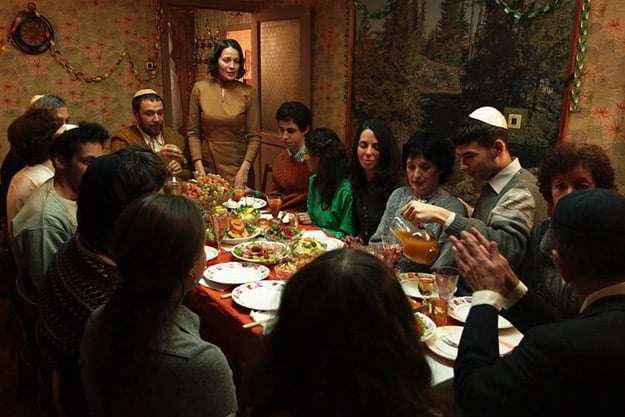
As a Kabardian man, what made you decide to center the movie on a Jewish woman?
I needed a strong female character, and as you said, I’m a Kabardian. Kabardian families tend to have men in charge, they’re more patriarchal. When I was with a Jewish girl, I saw the relationships in her family, and I saw that women were in charge. I needed two strong female characters—a mother and the daughter—and a conflict between them, so that’s why I decided that they should be Jewish.
And why a female character? As men, we have these mental borders that we’re not able to step out of. We are very predictable. Women often step out of these borders and are able to be unpredictable. A man wouldn’t be able to tell his family, I choose this woman, and I don’t give a fuck that she is Jewish or Russian. I’m just going to marry her. A man wouldn’t be able to do that, but a woman can. Women are much stronger than men.
I read that “Closeness” is not an entirely accurate English translation of the film’s Russian title.
It’s a bit different. [Tesnota, the original title] means tightness. It means not just the lack of space between people, but this closeness between family members that can hurt someone. Like when a mother is so overwhelmed by her love for her daughter that it hurts the daughter. This selfishness within families is what we wanted to convey with the title.
Speaking of excessive closeness within families, the relationship between Ilana and her brother David seems to have an incestuous undertone. Did you intend it to be that way?
I’ve heard this interpretation. No, I didn’t mean it that way. For me, they are too close and she loves him, but as a human being, not a man. There wasn’t any incest for me at all. I just like it when my characters want to touch each other, want to feel each other. I don’t care if it’s sisters, brothers, fathers, mothers. I want it to be a touchable movie.
Darya Zhovner is really mesmerizing in the film. She has this intense performative energy that drives the film forward. How did you work with her to elicit that performance?
She’s a great artist, so there weren’t any problems while working with her. But I needed her to feel this region, because she was born in St. Petersburg and didn’t know anything about North Caucasus and its rules and traditions. Her movement was that of a girl from St. Petersburg. I needed to make her a little bit slower, because she was too dynamic for this region.
We had some rehearsals with her, and as soon as I saw her working, I knew that I had made the right choice. She has a rebellious spirit. I think she is familiar with most of the problems between mother and daughter in this film. I think that’s why she has mesmerised people. I truly believe that 90 percent of the film is based on her performance.
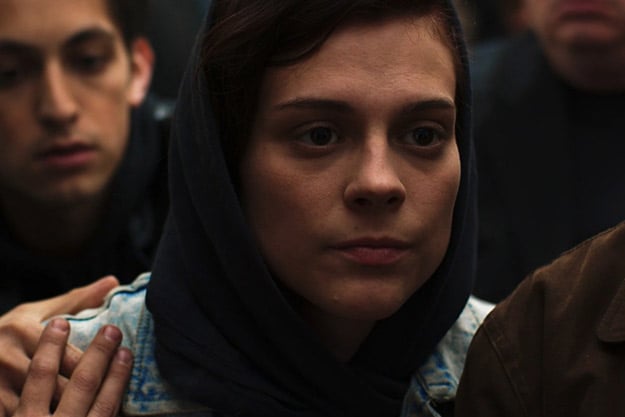
I agree. I couldn’t take my eyes off her.
I also wanted people to feel like this was a true family on the screen, and so I collected all of them—Ilana, the mother, the father, David—and had them just talk to each other, laugh, tell stories. That’s very important to me. With some directors, actors just meet each other on set. That’s not how it works for me.
You’re a graduate of Alexander Sokurov’s filmmaking workshop at the Kabardino-Balkaria University. I read that during the workshop, you were asked to refrain from depicting excessive violence and religion because those are sensitive topics in the region. How did Sokurov react to Closeness, given that it has both graphic violence and religious conflict?
Yeah, yeah, that’s true, but when Sokurov saw the film, the first draft of the montage, he didn’t tell me to cut the execution scene. When Sokurov was talking about violence, he didn’t want us to make poetry out of it, or make entertainment out of it. When I was at the Cannes festival, some young guys came to me and said, “Wow, that execution scene was freaking awesome. That was so beautiful,” and I said, “Hey, it’s not supposed to be like that. You should be scared by it.” But I get that for American people, violence is often more like entertainment. I think that’s what Sokurov meant.
I’m curious about your use of that execution video from the Dagestan massacre. You’ve said that you first came across it as a teenager. Why did you decide to include it in the film?
I was like 14 years old when I first saw it. It was on CD I guess, and the whole school was watching this film. It was my first meeting with death, and the most striking thing about it was that it was our neighbors. It was scary for us. But then someone would say that the Chechens are right, that you should kill the Russians, etc.
Someone said that in reality? Or are you talking about the film?
No, no, in reality. We have this situation now, it’s not like it was in the ’90s, but we have some guys who say that we should split from the Russian Federation, that we are not a part of it, etc.
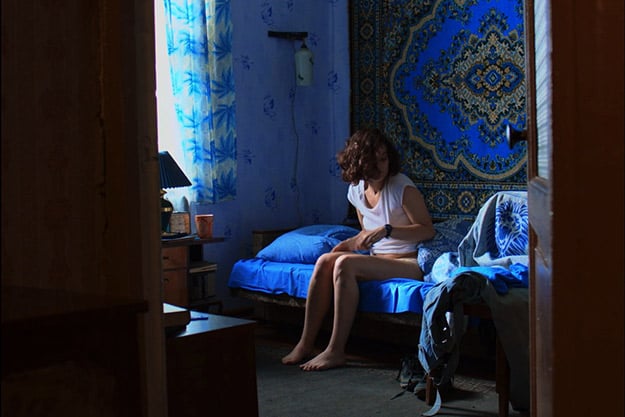
Some people were offended by your inclusion of the clip and thought it was unethical since it’s an actual snuff film. Were you concerned about that? Did those reactions surprise you?
No, honestly, that didn’t bother me because I knew that I needed it to provide the geographical and political context of the time in which my characters were living. That was a major part of it. The other part was, of course, the emotional impact. I thought of re-creating it fictionally, but I knew the emotional impact on the audience would not be the same. I wanted them to respect these deaths. When you recreate death, you can always see that it’s not true. So I knew I needed the actual tape.
I want to talk about another instance of violence in the film. There is a scene in which Ilana is being forced to marry her family friend, so she goes and has sex with her boyfriend. And that sexual encounter, at least to me, seemed like it was non-consensual. It’s a violent encounter, and it’s a bit tragic when she uses the blood from it to insult her family friends and escape the imposed marriage.
Yeah, it’s like a rape, that scene. It’s supposed to be violent because she doesn’t get any pleasure from it. That’s why I knew that I needed to shoot that scene in a wide shot. That way, the audience can feel like they are watching in on someone. Like they’re witnesses. Because that’s a crime scene for me.
When you see something dramatic, like death, in a wide shot, you feel like you’re a witness. The emotional impact is completely different from when you shoot it in a close-up. As my mentor Sokurov said, you shouldn’t make entertainment from violence, and close-ups make it into entertainment. You’re not always supposed to see what’s happening on the screen. You should give your characters their own lives and their own space. I knew that I didn’t have the right to come any closer in that scene.
You’ve said in some interviews that you’re inspired by the French New Wave and the Dardenne brothers. Your film has that social realist aspect, but it is also heavily stylized. Every shot is meticulously composed, especially with an emphasis on color.
Well, I’m a young director. I need to work on my style, on my vision. When you see a film by the Dardenne brothers or by Haneke, you can immediately say—this is a Dardennes film, this is a Haneke film, this is a Sokurov or Tarkovsky film. That’s what makes directors into auteurs. Everyone can be a director, but an artist? Not so many.
I knew that if my film was not stylized, and had dark and gray colors, it will be just another social movie about social problems. I wanted it to be a drama of colors, and I gave each character their own color. For Ilana, it was blue. It [signifies] freedom, heaven, skies. Zalim, her boyfriend, is also blue. For the family and the home, it’s warm colors, except for Ilana’s room, which is again blue. I wanted colors to separate some characters, and to join others. By the end of the film, David, the brother, is wearing all green, which is the color of his bride Lea. She’s dressed in green throughout the film. For me, that meant that he just left his family and went to another family.
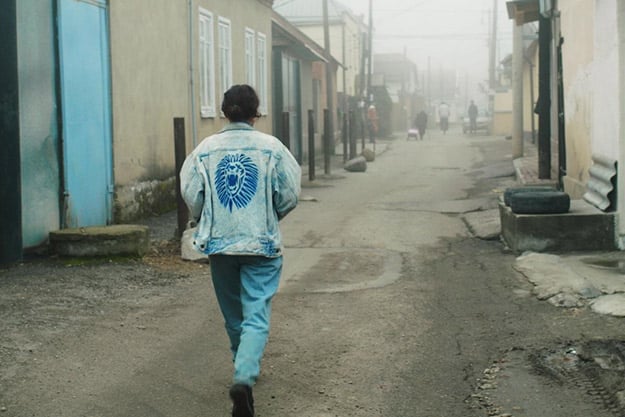
Are there any specific films or filmmakers that inspired Closeness?
Rosetta, by the Dardenne Brothers. Bresson’s Mouchette. Those were the first few films in which I was truly mesmerised by female characters, and I was like, yes, they are the heroes of our time. And then Lars Von Trier’s Breaking the Waves. These films have some of the strongest female characters ever. Also Philippe Grandrieux’s Un Lac, that was also an inspiration.
You said that you wanted to set this film in North Caucasus because that area is underrepresented in Russian cinema. Do you think that might change after the success of your film?
I hope so, but unfortunately in cinema everything depends on your connections, and if not for Sokurov, I wouldn’t have been able to make this film. Sokurov had 12 students, and I am one of them. He helped four students with their first feature film. No one other than him helped us. And this is our pain, you know. People are always talking about our problems, but we want to show the world who we are, that we have some feelings, too, like you do. There’s no opportunity for people from North Caucasus to do that.
The saddest thing is that the region doesn’t give a fuck about us, they don’t help us at all. It’s not just Moscow. I can understand that Moscow is the center of Russia, they don’t have time for North Caucasus. But the region, the government of the Kabardino-Balkaria Republic, they could at least support one feature film in two years. But they aren’t interested in that. They didn’t help us at all, because they’re stuck in the past. There’s no modern artistry. There’s stagnation. That’s the saddest part of it, because Sokurov just wasted his time.
Do you think you’ll make more films set in the region?
I definitely will. I hope my third film will be about North Caucasus again, but about different problems. We’ll see.
I heard that you’re already working on your next film. What’s it about?
I can’t give too many details because I have a contract. But it’s based in Leningrad, in 1945, after the Second World War. It’s a story about two women who return from the Front, and are trying to make their own lives, to make normal lives. So it’s again a story about women.







